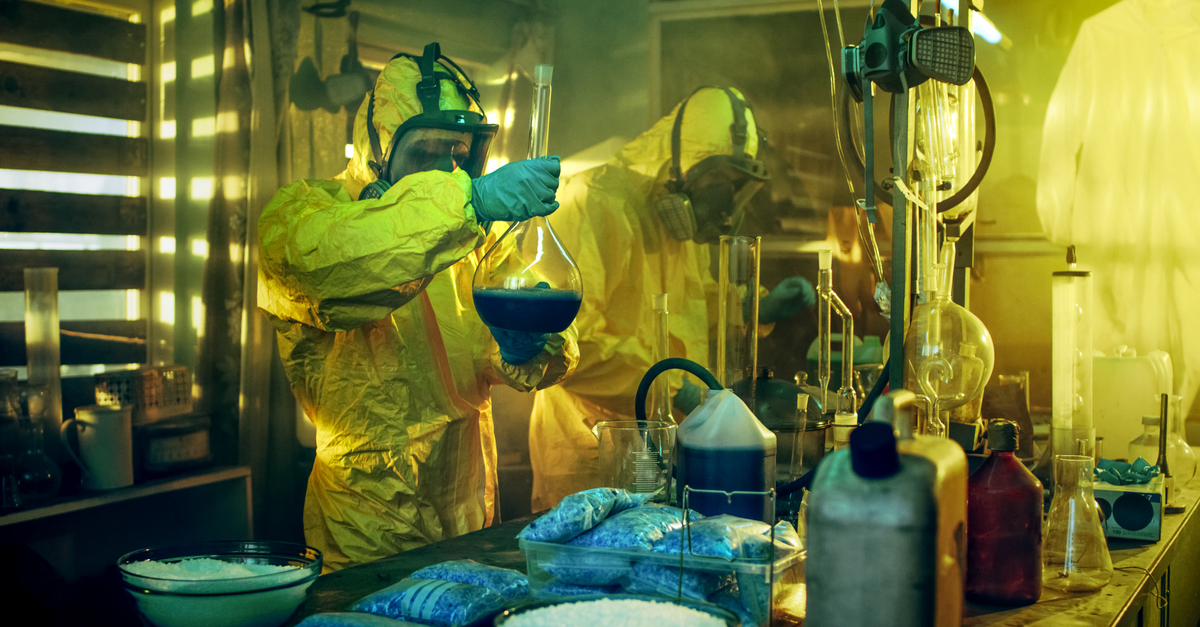 David Fawcett PhD, LCSW
David Fawcett PhD, LCSW
This blog is part of a series on the interplay between substances and sex. In my previous post, we discussed opioids and sex, and before that, we discussed alcohol and sex. This week, we look at stimulants and sex. In part one of this two-part post, we will focus on methamphetamine. In part two (next week), we will look at other stimulant drugs, including caffeine, nicotine, MDMA, cocaine, and prescription medications like Adderall and Ritalin.
Methamphetamine is a synthetic stimulant that, since the early 2000s, has fueled a global epidemic in which the drug is often paired with high-risk sexual behavior. It was first formulated in the late 19th century, appearing in crystalized form in early in the 20th century. The drug began to find popularity in the 1920s along with cocaine, but it really came of age in World War II when it was used by both Axis and Allied forces to increase wakefulness and aggression. Following the war, it found underground popularity and was distributed by motorcycle gangs who hid the drug in their bikes’ crankcases (thus the slang term crank). Meth use rose and fell in waves of popularity until the early 2000s when it became more widely distributed. Since that time, it has been consistently utilized as a sex-enhancing drug, often among men who have sex with men.
The Combat Methamphetamine Act of 2005 curbed the domestic sale of pseudoephedrine, which is used to manufacture meth, and supplies on the street rapidly dwindled. Demand for the drug never waned, however, and soon the Mexican drug cartels streamlined manufacturing methods and began to turn out large quantities of high-purity meth from industrial plants along the Mexico-US border from Texas to California. This, combined with the advent of mobile phones and hookup apps, fueled a worldwide escalation in the use of the drug that continues to this day.
When meth, like other amphetamines, is introduced into the body, it acts primarily on the reward center of the brain, stimulating the release of monoamines – neurotransmitters that include dopamine, serotonin, and norepinephrine, which create pleasurable feelings. The reward center is an area of the brain that is hardwired to make activities that are necessary for survival, such as eating and sex, gratifying by releasing bursts of ‘feel-good neurotransmitters,’ notably dopamine. Cocaine stimulates the reward center in a similar fashion, but meth’s duration of action – lasting up to twelve hours – makes the drug popular for prolonged sexual experiences. This long-lasting action also brings particularly toxic consequences.
Unlike cocaine, which is a naturally occurring molecule from the coca plant, methamphetamine is a synthetic molecule that is larger and ultimately not absorbed by the body. (It eventually exits the body in urine.) Because of its size, the methamphetamine molecule sits on the neurotransmitter receptors for a longer period of time, thereby increasing its toxic effects. Even worse, and unlike cocaine, methamphetamine not only blocks the receptors, it ultimately destroys the neurons themselves, creating a functional brain injury.
This explains the long process required for recovery of cognitive skills, especially verbal, after the user is abstinent from meth. The brain must literally ‘rewire’ by creating new neural pathways, a process that takes up to 24 months. This is visually portrayed with stunning impact on fMRI scans (functional magnetic resonance imaging scans), which measure blood flow in the brain. Normal dopamine levels, indicated by bright reds and oranges, only start to reappear in recovering meth addicts after a year or more of abstinence.
Methamphetamine’s power to release dopamine – the so-called pleasure transmitter – is striking when compared to other pleasurable activities and drugs that also release this neurotransmitter.[1], [2] Food consumption stimulates a release of about 150 units of dopamine, whereas sex without methamphetamine creates a release of about 200 units of dopamine. Nicotine, well known for its highly addictive properties, produces 250 units, even higher than food and sex. Cocaine, known to trap many users into a powerful craving for the drug, releases about 350 units of dopamine. Methamphetamine, an artificial substance that overwhelms the brain’s ability to process it, releases a torrent of nearly 1100 units of dopamine, nearly three times that of cocaine.
Meth dramatically stimulates the midbrain, essentially putting the body into a fight-or-flight mode. The heart races, pupils widen, the mouth gets dry, and blood flows to extremities in order to propel running or fighting. At the same time, one’s mood is temporarily heightened as a sense of invincibility flows through one’s consciousness. Self-doubt, fears, and almost any other concern are temporarily washed away as the brain focuses on desire and anticipation of the flood of good feelings that will follow. When paired with sex and sexual desire, meth super-stimulates the user, essentially ‘hijacking’ sexuality. With continued use, serious physical consequences can occur, including heart attack, stroke, and pulmonary hypertension. Users can also experience psychotic episodes including heightened and sometimes persistent paranoia.
The power of crystal meth to heighten anticipatory desire quickly causes the brain to bond the drug with intense sexual fantasies. This pairing is repeatedly amplified by the power of the sexual drive, and soon the effects of meth bond with other sexual sensations. Meth, even more than cocaine, fuses with the user’s inner sexual life – the user’s most secret desires and fantasies. It supercharges sexual drive and self-confidence while powerfully rewarding the pleasure of sex. Interestingly, even though the sex drive takes off with meth use, the ability for male meth users to achieve and maintain an erection is, over time, greatly diminished.
Methamphetamine is available pharmacologically as Desoxyn, which is prescribed primarily for ADHD. This strong drug has decreased in popularity because of its side effects and addictive potential. Often, it is replaced with Adderall, a combination of amphetamine and dextroamphetamine salts that is considered safer to use. Adderall is also utilized to treat narcolepsy.
References
[1] Fiorino D, and A Phillips. (1999). “Facilitation of Sexual Behavior and Enhanced Dopamine Efflux in the Nucleus Accumbens of Male Rats after D-amphetamine-induced Behavioral Sensitization.” Journal of Neuroscience, 19(1), 456-63.
[2] Carboni E, A Imperato, L Perezanni, and G Chiara Di. (1989). “Amphetamine, Cocaine, Phencyclidine and Nomifensine Increase Extracellular Dopamine Concentrations Preferentially in the Nucleus Accumbens of Freely Moving Rats.” Neuroscience, 28(3), 653-61.
